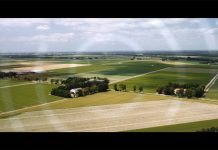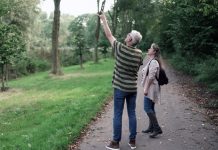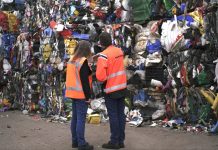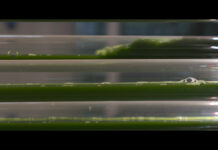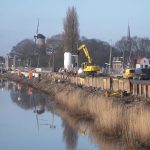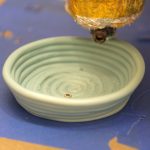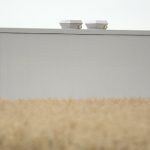Pilot
Om de overgang te maken van reguliere bollenteelt naar een duurzame teelt moet worden onderzocht hoe telers anders om kunnen gaan met de uitdagingen waar zij mee te maken kunnen krijgen. Welke alternatieven zijn er om bepaalde ziektes te bestrijden en werken de succesvolle methoden op kleine schaal, ook op grote schaal? Dit wordt onderzocht in de “Pilot Duurzame Teelt van Tulp & Bijgoed”.
Toekomst
Zowel het ministerie van Landbouw, Natuur en Voedselkwaliteit (LNV) als de Koninklijke Algemeene Vereniging voor Bloembollencultuur (KAVB) streven naar een bloembollenteelt waarbij het gebruik van chemie in de toekomst zo veel mogelijk wordt geminimaliseerd. Om te blijven voorzien in een eindproduct van goede kwaliteit, is een gecontroleerde overgang naar duurzame of biologische teelt vereist. 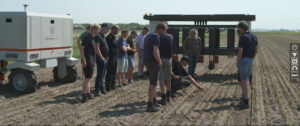
Vertify
Agrarisch onderzoekscentrum Vertify heeft daarom samen met vier praktijkbedrijven onderzoek gedaan. Ze hebben de beste resultaten uit het project “De Groene Tulp“, op grotere schaal getest. Wat zijn de resultaten wanneer een groter perceel met een alternatief middel wordt behandeld nadat een bepaalde ziekte is geconstateerd. Is dit duurzamere middel effectief genoeg om de teelt te behouden? 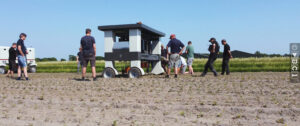
Deelnemers
Om een goed beeld te kunnen vormen, werken de deelnemende praktijkbedrijven zowel op kleigrond als op zandgrond. Daarnaast werken twee bedrijven op de reguliere manier en twee bedrijven op biologische wijze. De deelnemers zijn Apeldoorn bloembollen uit Egmond Binnen, Boon & Breg uit Andijk, Huiberts bloembollen uit Sint Maartensbrug en Schouten Tulips uit Zwaagdijk. 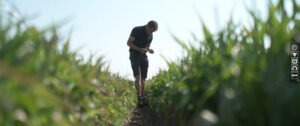
Verandering van teeltsystemen
Uit dit onderzoek blijkt dat het niet mogelijk is om het ene middel simpelweg te vervangen door een ander duurzaam middel. Er is een verandering van teeltsystemen nodig. Een systeemwijziging vraagt echter meer inzet van een teler, waardoor het extra belangrijk is om ervaring op te doen en deze ervaringen te delen met andere telers. Waardoor het mogelijk is om op grote schaal veranderingen te bewerkstelligen. 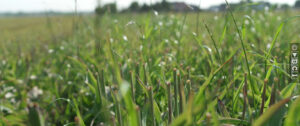
Zie ook:
Digital Farming – Plaatsspecifiek toepassen
Gezocht, boer van de toekomst
Digital Farming Applying site-specific techniques
Pilot
To make the transition from conventional flower bulb cultivation to sustainable cultivation, it is necessary to explore how growers can approach the challenges they may encounter differently. What alternatives are there for controlling certain diseases, and do the successful methods on a small scale also work on a large scale? This is being investigated in the “Pilot Sustainable Cultivation of Tulip & Allied Species.”
Future
Both the Ministry of Agriculture, Nature, and Food Quality (LNV) and the Royal General Bulb Growers’ Association (KAVB) aim for flower bulb cultivation in which the use of chemicals is minimized as much as possible in the future. To continue to provide a high-quality end product, a controlled transition to sustainable or organic cultivation is required. 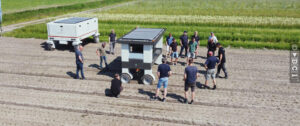
Vertify
For this reason, the agricultural research center Vertify, together with four practical companies, conducted research. They tested the best results from the “The Green Tulip” project on a larger scale. What are the outcomes when treating a larger plot with an alternative substance after a certain disease has been identified? Is this more sustainable method effective enough to maintain the crops? 
Participants
To gain a comprehensive understanding, the participating practical companies are working on both clay and sandy soil. Additionally, two companies follow conventional methods, while the other two work organically. The participating companies are Apeldoorn Bloembollen from Egmond Binnen, Boon & Breg from Andijk, Huiberts Bloembollen from Sint Maartensbrug, and Schouten Tulips from Zwaagdijk. 
Changing cultivation systems
This research indicates that it is not possible to simply replace a substance with another sustainable alternative. A change in cultivation systems is necessary. However, such a system change requires more effort from a grower, making it crucial to gain experience and to share these experiences with other growers. Which enables the implementation of changes on a large scale. 
Also interesting:
Digital Farming – Applying site-specific techniques



